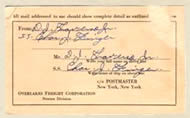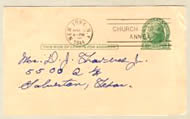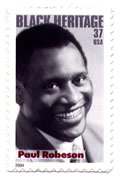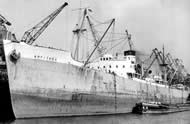Voyage Three
SS Charles J. Finger - Page 1
I must have gotten home to Galveston around the 25th of January, 1944. I spent only a short time with my wife, and parents before I caught another ship. The War Shipping Administration gave you up to thirty days ashore, but I usually didn't take all of the time before I went out again. The voyage officially commenced on February 9, 1944. As his first two ships had been, the SS Charles J. Finger, was an EC-2 Liberty just off the Todd Shipyard ways in Houston. The records show that they sailed from Houston 2/18/44 and from Galveston 2/19/44 in Convoy HK-195. They didn't put in at New Orleans but steamed directly to New York after passing through the Florida Straits at Key West. The Finger arrived New York on February 29, 1944.
We took on deck cargo in New York and prepared for the crossing. My friend Johnston was deck engineer and I was one of the messmen. Another messman was Zol Harvey who was from either Galveston or Texas City. William "Curtis" Hurst was one of the wipers in the engine room. He was living in Galveston at the time but we first met on the Finger. Curtis and I became very good friends and shipped together several times.
I think that it was on this trip that an interesting incident happened. I was ashore in New York with Johnston. We went into Shraft's, a pretty famous restaurant, to get something to eat and it was packed - people just off work. We had got a table and had ordered and were waiting for our food to come when this colored man came over to our table. He was a big handsome man, older than us with a deep voice and he was dressed like a million dollars. He was in an expensive dark dress suit and tie, a top coat over his arm and he wore a homburg hat. He was very polite. Since the tables were all taken and we had an extra chair, he asked if we minded that he sat at our table and got something to eat. We said, "No, we don't mind, sit down." He was very friendly.
He asked us where we were from and we told him. Said he could tell that we were from down South by the way we talked. He asked what we were doing in New York and we told him that we were off a ship. He ordered a club sandwich and coffee, if I remember. Johnston recognized him first. Johnny asked him if hadn't we seen a life-size stand up photograph of him on the sidewalk down the street. He said yes, outside of a theater where he was performing in a play. He introduced himself - he was Paul Robeson. He was playing Shakespeare's Othello on Broadway. I hadn't recognized him. But Johnny and I had seen him in the movies and pictured in newspapers and magazines. He was really famous, probably the most famous colored man in America at the time, except for maybe Joe Lewis the heavy weight boxer. He said he had just played the matinee and always came for a sandwich before the evening performance. He was very relaxed and friendly and didn't act like a big shot at all. We chatted while we ate. He finished his sandwich, shook our hands and wished us luck on our voyage and left. Now that was unexpected and something to remember. I am certain that the same trip that we met Paul Robeson, Johnston and I had our picture taken in New York. The pictures were printed as post cards and I sent one to mom and one to Della. I still have both picture post cards of me and Johnny that I sent home in early March '44 from New York.
The Charles J. Finger left New York at 0630 March 6, 1944. She was part of a big convoy, HX 282 was eighty-six ships with twelve escort vessels including an aircraft carrier. By this time submarines were no longer attacking convoys because they were so protected. Earlier in the War there was hardly any protection. Some of the first convoys I was in had just motor patrol boats or a couple of corvettes or an old four stack destroyer from World War I. Now there were new destroyers and air cover as they had these "baby flat-tops", small carriers that could keep a couple of planes up most of the time all the way across. And the convoys were made up of more modern ships. Earlier on you would see these old relics, Hog Islanders from World War I and even older ships that probably shouldn't have been out there . More and more it was Liberties, C1s and C2s and later Victory ships.
The North Atlantic is always rough and cold, especially in the winter months. I have seen so much ice on everything that you wouldn't recognize it as a ship. It is especially dangerous moving around on a pitching deck when every bit of metal is covered with ice - ice several inches thick. We had to use fire axes to break the ice. It must have been really rough to cross in those little corvettes. They would go completely out of sight and come bobbing back up like a cork, coming completely out of the water. I don't know what it would have been like to ride one of them things across, and we even had tugs cross with us. I'm not just talking about ocean going tugs, I'm talking about tugboats. I don't know how they made it. They must have had everything battened down tight all of the way over and it must have been a horrible ride.
I mentioned collisions at sea. Put that many ships together and there are bound to be accidents. The North Atlantic is often foggy, rainy, or icy. In poor visibility and rough seas its easy for ships to get out of position and at the same time be almost blind - back then we didn't have any radar. One trip it was foggy and we were sounding our fog horn at regular intervals and had our fog buoy off the stern, all the ships were doing the same. Something came loose, a bolt or a screw and lodged in the brass whistle on the stack and the whistle kept blowing; it was stuck open. We couldn't stop it - couldn't get a man up there to fix it with all that steam coming out before we lost all pressure. We were dead in the water until a man could get up there to fix the whistle and the engineers could get the steam back up.






